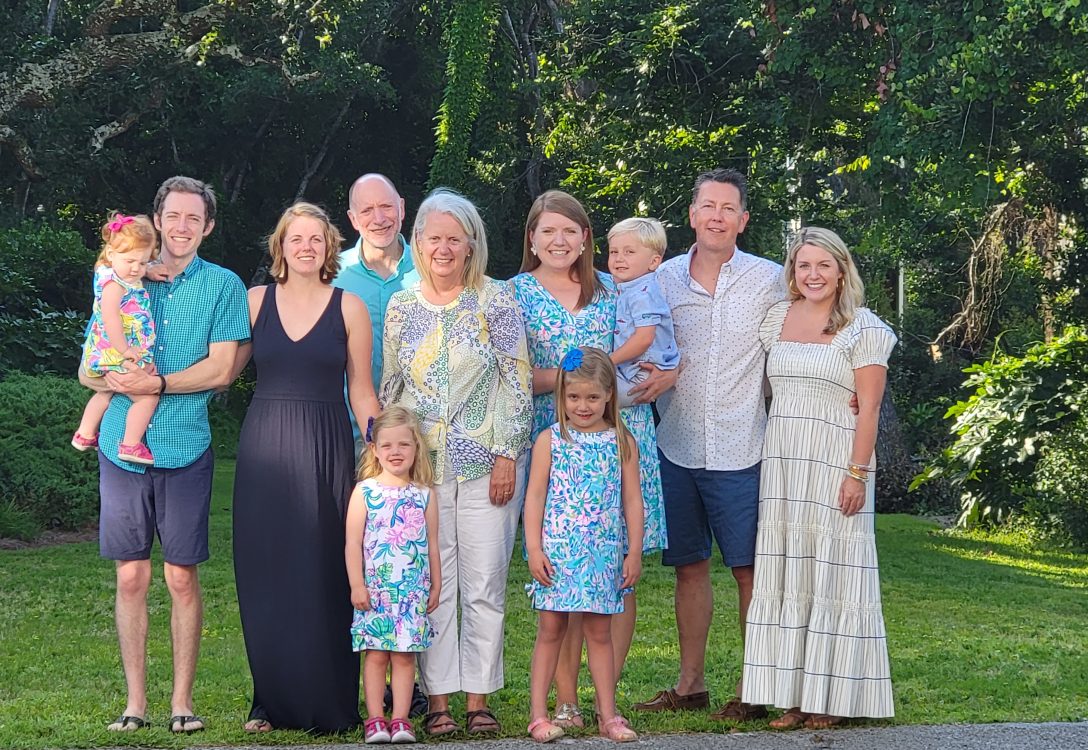I was ready for Saturday, July 16 to arrive.
Deep inside, I felt a need to get away.
My wife, the Commander Supreme, had worked with the calendars of our three children and their families. Those logistical negotiations had us returning to Topsail Island, North Carolina.
For a couple of weeks, a corner in our dining room had been accepting items designated for the beach. On the afternoon of Friday, July 15, I had my usual unpleasant encounter with our rooftop carrier. In the end, the tussle was a draw.
We were about fifteen minutes off schedule in departing Richmond on Saturday morning. The Commander blamed it on aging.
The drive to Raleigh to pick up our youngest daughter, Elizabeth was uneventful. The challenge would be squeezing Elizabeth’s stuff into any empty spot in the car. In the days prior to our departure, I had teased her about bringing only one bag.
There was more than one bag, but we fit the junk in the car. Thankfully, I did have a back seat space, but my left side could feel the encroachment of the new passengers. My seating wasn’t as bad as an airline seat, but close.
Elizabeth was the designated driver for getting us out of Raleigh. A heavy rain shower doused us within minutes of our start, but we quickly drove out of it.
After the rain, traffic, and some construction kept our attention as Elizabeth pushed us toward I-40.
The landscape and the terrain began to taper as we pushed further east. Soon, we were off the interstate, and we took a combination of North Carolina two lane roads into the coastal plain.
Single stop signs marked intersections where we made turns. These were almost empty crossroads with a service station and maybe a fast food store.
To my left and right, green was the dominant landscape color. Mixed in those parcels were houses and mobile homes. Occasionally, weather weary sheds, barns, and produce stands that were barely standing showed up.
Deserted houses and cars were woven into that countryside with weeds dominating their perimeters.
The need for lumber left some sections of green barren. Gone were the once densely populated, towering trees.

There was more green—fields of corn and soybeans. Any empty plot of land sprouted over my head corn stalks and knee high swaths of soybeans.


We inched eastward, and the traffic picked up.
Soon we were navigating the first round-about before crossing the high rise bridge over the intracoastal waterway in Surf City. After the bridge, another round-about awaited, and we scurried through unscathed.
Check-in time was four at the rental house. So, we drove to the Beach Shop and Grill for a drink and snack. We sat in their newly expanded patio.
Four o’clock arrived, and we drove back to the house, parked, and were ready to unload. But despite our efforts, the door lock would not accept the code we had been given. Finally, we entered the code by not following the recommended instructions, and we gained access.
Unpacking went well, and then the Commander and I took a walk to the beach. We checked out the pretty Atlantic Ocean, and the water felt warm in the ankle deep surf.
Shortly after our return from the beach, the confession took place.
Both of our daughters, Lauren and Elizabeth, have their mother’s DNA when it comes to the details of organizing and logistics.
Earlier in the spring, Lauren had borrowed the shibumi from us for a long weekend with her family on the North Carolina coast. The week before our trip to Topsail, Lauren handed the shibumi over to Elizabeth.
Of course, when we packed Elizabeth’s luggage into our car, the shibumi was forgotten. It remained in Elizabeth’s car.
So early on Sunday morning, I found myself driving back to Raleigh to retrieve the shibumi.
I retraced our route from Saturday. Traffic wasn’t bad. And as I drove, my old brain wandered all over the place.
I thought about the shibumi. It meets a very simple need for beach lovers in the summer— shade.
I thought further about needs. I have been very, very lucky in my life. I can’t ever remember a time when a need I had wasn’t met.
I had good parents, a stable home. I grew up in an imperfect world, but as kid that world seemed perfect.
The needs in our world today are massive. Immunity isn’t available. Any whining need I have is nothing compared to what a person might be experiencing in my neighborhood, county, city, state, country, and world.
Where am I in trying to reduce those needs?
Driving to Raleigh to bring back a shibumi.
But, I also ask myself what is at the heart of securing that shibumi?
The answer is love.
I love my wife, our daughters, our son, and their families.
And, truthfully, I love the shibumi’s simple shade.
And yet, I wonder if you, me, we, us will ever realize that love is the key to meeting those needs in the fragile people who surround us in our neighborhoods, counties, cities, states, and world.
What might happen if I loved the needs of those fragile people as much as I love our shibumi?
Perhaps, I need to consider the application of this wisdom from Gary Chapman: “ Love is a choice you make everyday.”






